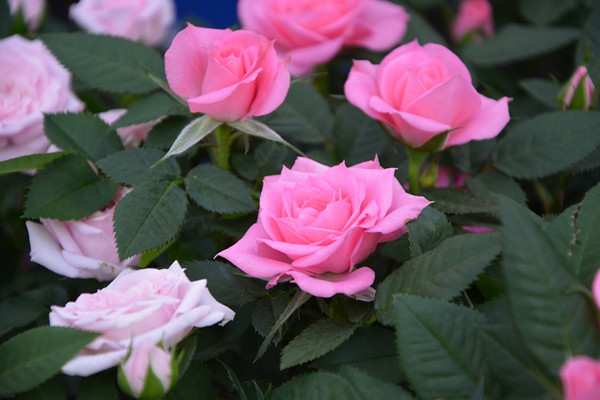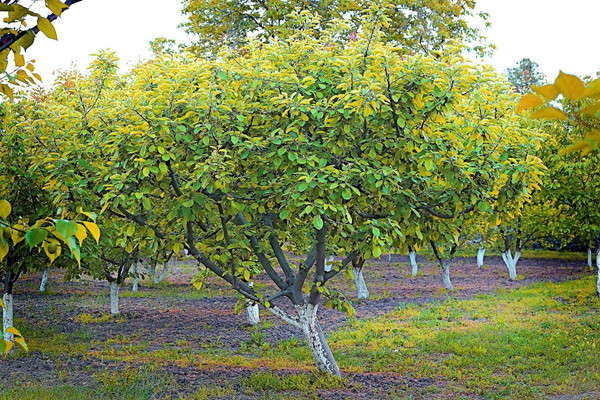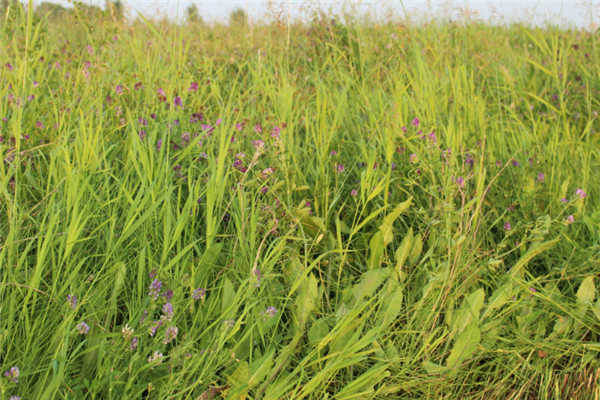When is the grafted rose easy to survive? What are the grafting methods?
Rose is known as the queen of flowers, also known as "moon red". It has strong adaptability and cold tolerance, no matter whether it is planted in the ground or in the pot, and grafting is one of the ways of reproduction. So, when is the grafted rose easy to survive? What are the grafting methods?

When is the grafted rose easy to survive?
The grafting survival rate of rose is greatly affected by the grafting period, and the best grafting period is from early September to mid-October, and the survival rate is the highest. The best temperature for grafting is between 18 ℃ and 25 mol, and grafting should be done when there is no rain in sunny days.
Rose grafting method
1. Bud grafting method
Cut off the branches with flowers and leave 0.5 cm petiole. Squeeze the tip with the thumb and index finger of the left hand, with the petiole upward, at an angle of 45 degrees with the ground. Use the budding knife to cut down 0.5 cm above the bud to the xylem, from shallow to deep, from deep to shallow after budding, and the incision is 2.5 to 3 cm long. The buds were removed from the branches. Gently pinch the petiole with the left hand, the xylem upward, and the right hand turn the skin a little under the bud to make the xylem warp up. As soon as the xylem is peeled off, the xylem is peeled off, and then quickly cut with a grafting knife in the smooth part of the rootstock about 1.4 meters high, depending on the size of the scion bud. Generally speaking, the knife edge is about 0.5 cm long. Make a longitudinal cut down on one side of the incision. Be careful not to damage the xylem. Insert the tip of the knife from the intersection of the two knives, lift the skin, tear 2 cm down, leave 0.4 cm below, cut off the upper 1.6 cm skin, quickly put the buds into the cortex opened by the rootstock, stick closely to the xylem of the rootstock, and retain the bud eyes. wrap the interface tightly with a plastic strip 20 cm long and 0.7 cm wide.
two。 Wood embedded bud grafting method
Use a single-sided safety blade on the sunny side of the rootstock 4 to 6 cm from the ground, and cut a shield-shaped incision 1 to 2 cm long at an oblique angle of 30 °to 40 °. Then use the same method, the same size on the ear to select full buds embedded in the cut rootstock cut, with elasticity and moderate width of the white plastic belt from the bottom to the top ring edge binding firm, loose and tight.
When embedding the buds into the incision, the cambium should be aligned as much as possible so that the xylem of the rootstock is not exposed. The operation of this method is simple and fast, and the survival rate is high, but the technical requirements are high, so it is necessary to master the technique of one-time anastomosis of rootstocks and scions.
3.T-shaped budding method
T-shaped bud grafting is also a popular method of rose grafting at present.
Use a short-edged vertical knife to cut across the unbranched sunny side of the rootstock 4 to 6 centimeters from the ground, about 5 to 8 millimeters wide, its depth rigid and xylem, and then cut vertically in the middle of the transverse incision, about 1.5 to 2 centimeters long, so that the cortex forms a T-shaped opening.
Cut the ear strips from the mother plant, remove the leaves and leave the petiole, choose a full and full bud, cut a knife about 0.5 cm above it and cut it into the xylem about 3 mm. Then use the knife from about 0.5 cm below the bud and the xylem upward to the incision above the bud.
The cortex of the T-shaped incision of the rootstock is cut open with a knife, and the buds are implanted into the incision. after implantation, fine-tuning should be made to align the transverse incision of the bud with the transverse incision of the rootstock without exposing the cambium of the rootstock. After the bud is put, it is bound with plastic tape, and the bud must be exposed when it is bound. Although this method is tedious and time-consuming, the grafting of one plant can be completed within one minute after skilled operation, and the survival rate of grafting is very high.
Time: 2019-04-11 Click:
- Prev

When are apricot trees usually grafted? What are the grafting methods?
Apricot is native to China and is one of the oldest cultivated fruit trees in China. The main method is seed breeding, which needs wet sand stratification to accelerate germination when sowing, and can also be grafted and propagated by seedling as rootstock. So when are apricot trees usually grafted? What are the grafting methods? When are apricot trees usually grafted?
- Next

How to control diseases and insect pests when planting alfalfa in autumn and winter?
Alfalfa is the earliest and most widely distributed perennial leguminous forage in the world. it not only has high yield, good grass quality and high nutritional value, but also is resistant to cold and drought, barren, adaptable and suitable for planting in a wide range of areas. it is the first choice for increasing milk yield of dairy cows and developing beef cattle industry.
Related
- Fuxing push coffee new agricultural production and marketing class: lack of small-scale processing plants
- Jujube rice field leisure farm deep ploughing Yilan for five years to create a space for organic food and play
- Nongyu Farm-A trial of organic papaya for brave women with advanced technology
- Four points for attention in the prevention and control of diseases and insect pests of edible fungi
- How to add nutrient solution to Edible Fungi
- Is there any good way to control edible fungus mites?
- Open Inoculation Technology of Edible Fungi
- Is there any clever way to use fertilizer for edible fungus in winter?
- What agents are used to kill the pathogens of edible fungi in the mushroom shed?
- Rapid drying of Edible Fungi

